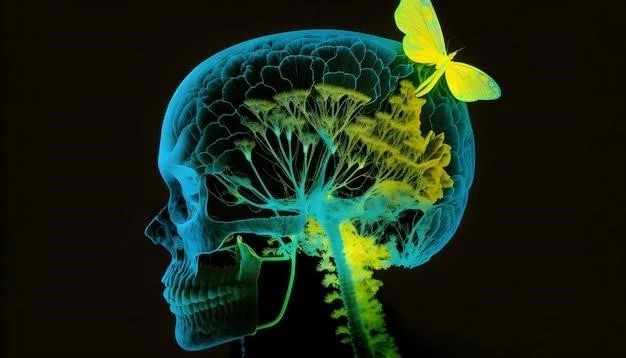Overview of Thanatophoric Dysplasia Cloverleaf Skull
The term ″Thanatophoric Dysplasia″ refers to a severe skeletal disorder classified into two subtypes based on distinct features. It is characterized by extreme limb shortening, narrow thorax, and unique craniofacial abnormalities.
Definition and Characteristics
Thanatophoric dysplasia cloverleaf skull is a severe skeletal disorder characterized by extreme limb shortening, narrow thorax, and distinct craniofacial abnormalities. It is classified into two subtypes based on unique features, with type II displaying a specific skull abnormality known as a ″cloverleaf skull.″ The condition is rare, typically resulting in stillbirth or early neonatal death due to respiratory failure. Genetic mutations, such as in the FGFR3 gene, play a role in the manifestation of this condition.
Types and Subtypes of Thanatophoric Dysplasia
Thanatophoric dysplasia is divided into two types⁚ Type I and Type II, characterized by distinct skeletal features and specific craniofacial abnormalities. Type II is distinguishable by a unique skull abnormality known as a ″cloverleaf skull.″
Type I Thanatophoric Dysplasia
Type I Thanatophoric Dysplasia is characterized by curved thigh bones and flattened spine bones known as platyspondyly. This subtype typically does not present with the specific cloverleaf skull abnormality seen in Type II Thanatophoric Dysplasia.
Type II Thanatophoric Dysplasia
Type II Thanatophoric Dysplasia is characterized by straight thigh bones and a moderate to severe skull abnormality called a ″cloverleaf skull.″ This subtype is associated with a unique skull deformity that can contribute to the lethality of the condition.

Cloverleaf Skull Deformity
The cranial abnormality known as a ″cloverleaf skull″ is a rare and severe form of craniosynostosis that results in the skull taking on a characteristic cloverleaf shape. This deformity is often associated with conditions like thanatophoric dysplasia.
Causes and Development
The cranial abnormality known as a ″cloverleaf skull″ in thanatophoric dysplasia is believed to result from the premature closure of multiple sutures in the fetal skull. This premature fusion leads to the characteristic cloverleaf shape, impacting brain development and can have severe consequences, including hydrocephalus. The condition is challenging to diagnose accurately before the third trimester of pregnancy due to the complex nature of craniosynostosis.
Radiological Features of Thanatophoric Dysplasia Cloverleaf Skull
The radiological features of thanatophoric dysplasia with a cloverleaf skull include distinct skeletal abnormalities, such as extreme limb shortening, narrow thorax, flat vertebral bodies, and unique cranial deformities like a cloverleaf-shaped skull. These features are critical in diagnosing and differentiating this severe skeletal disorder.
Thoracic and Skeletal Abnormalities
Thanatophoric dysplasia with a cloverleaf skull presents distinct features on radiological examination, including extreme limb shortening, narrow thorax, flat vertebral bodies, and a specific skull abnormality known as a cloverleaf skull. These skeletal abnormalities play a crucial role in diagnosing and differentiating this rare condition.
Clinical Presentation and Diagnosis
The clinical presentation of Thanatophoric dysplasia cloverleaf skull often includes extreme limb shortening, narrow thorax, specific craniofacial abnormalities, and distinct radiological features. Diagnosis is typically based on prenatal genetic testing, ultrasound findings, and postnatal radiological assessments. Early detection is crucial for appropriate management and counseling.
Neonatal Symptoms and Signs
Neonates with Thanatophoric dysplasia cloverleaf skull may manifest extreme limb shortening, narrow thorax, specific craniofacial abnormalities, and radiological features such as flat vertebral bodies. These clinical indicators are vital for diagnosing this condition promptly and accurately, allowing for appropriate medical management and counseling of affected individuals and families.
The association between genetic mutations, such as in the FGFR3 gene, and the development of cranial abnormalities like the cloverleaf skull deformity in conditions such as thanatophoric dysplasia underscores the genetic implications in the manifestation of these severe skeletal disorders.
Genetic Implications and Relationship to Cloverleaf Skull Deformity
The presence of genetic mutations, specifically in the FGFR3 gene, plays a significant role in the development of conditions like thanatophoric dysplasia with a cloverleaf skull deformity. Mutations in this gene contribute to the manifestation of severe skeletal disorders, including distinct craniofacial abnormalities like the cloverleaf skull. Understanding these genetic implications is crucial for diagnosing and managing such conditions effectively.
Prognosis and Management of Thanatophoric Dysplasia Cloverleaf Skull
The prognosis of Thanatophoric dysplasia with a cloverleaf skull is often poor, given the severe skeletal abnormalities and associated complications. Management involves supportive care and counseling for affected individuals and families. Early detection and appropriate medical interventions can help improve the quality of life for affected individuals, considering the lethal nature of this condition.
Treatment Options and Considerations
The treatment of Thanatophoric dysplasia with a cloverleaf skull is primarily focused on providing supportive care and counseling to affected individuals and families. Due to the severe nature of the skeletal abnormalities and associated complications, management typically involves palliative measures to ensure comfort and quality of life. Genetic counseling and discussions about the prognosis are essential components of the overall management strategy.

Case Studies and Reported Incidences
Case studies of Thanatophoric dysplasia often include infants with extreme limb shortening, narrow thorax, craniofacial abnormalities, and radiological distinctions. The presence of a cloverleaf skull deformity in some cases highlights the complexity and severity of this skeletal disorder.
Review of Documented Cases
Documented cases of Thanatophoric dysplasia with cloverleaf skull highlight distinct radiological features, such as extreme limb shortening, narrow thorax, and unique craniofacial abnormalities. The presence of a cloverleaf skull emphasizes the severity of this skeletal disorder, with less than 130 case reports globally. Understanding these documented cases is crucial in diagnosing and managing this rare condition effectively.
Associated complications with Thanatophoric dysplasia cloverleaf skull include hydrocephalus, neurological issues, and severe skeletal abnormalities, contributing to the high lethality of the condition.
Associated Complications and Risks
Hydrocephalus and neurological complications are common with Thanatophoric dysplasia cloverleaf skull, adding to the severity of the condition. These complications often contribute to the lethal nature of the skeletal disorder.
Research and Advances in Understanding Thanatophoric Dysplasia Cloverleaf Skull
Recent research on Thanatophoric dysplasia with cloverleaf skull has focused on understanding the genetic mutations, radiological characteristics, and associated complications to enhance early diagnosis and management strategies. Advancements in genetic testing and imaging techniques have contributed to a deeper understanding of this rare skeletal disorder, aiding in improved patient care and counseling.
Current Studies and Future Directions
Current studies on Thanatophoric dysplasia cloverleaf skull focus on genetic mutations, radiological distinctions, and associated complications. Future directions aim to enhance early diagnosis, improve management strategies, and explore potential therapeutic interventions to address the complex nature of this rare skeletal disorder effectively.
Conclusion
In conclusion, Thanatophoric dysplasia cloverleaf skull presents a complex skeletal disorder with distinct radiological features and severe cranial abnormalities. Understanding the genetic implications, associated complications, and ongoing research efforts is crucial in enhancing early diagnosis, management strategies, and potential therapeutic interventions. Continued advancements in genetic testing and imaging techniques offer hope for improved patient care and outcomes in the future.
